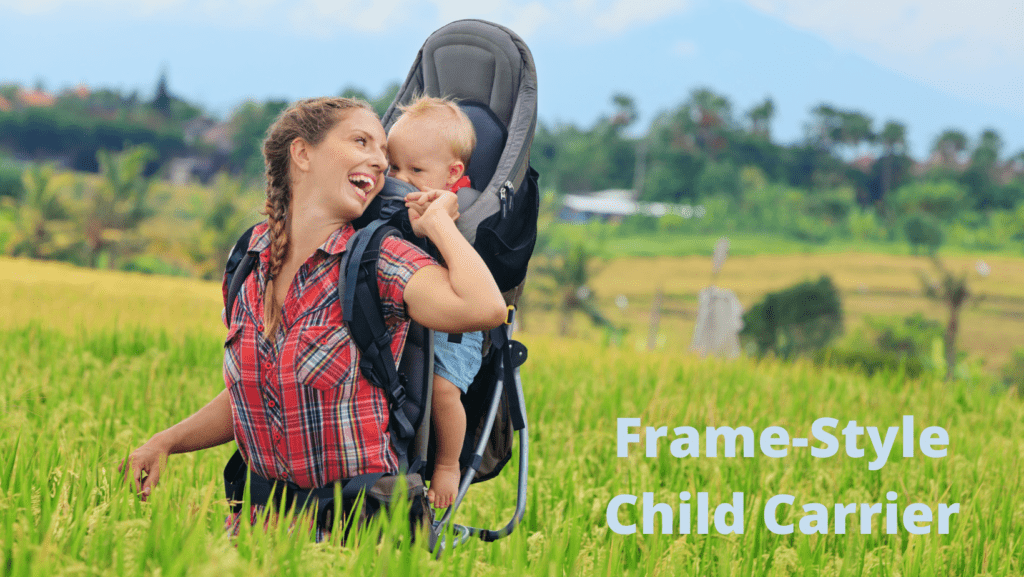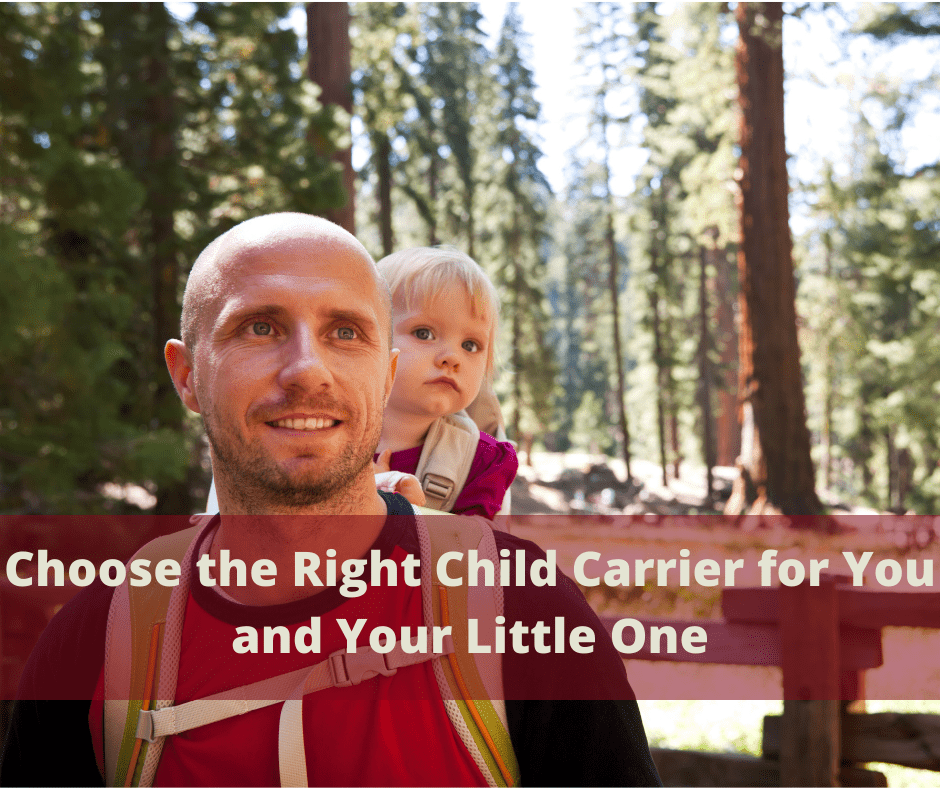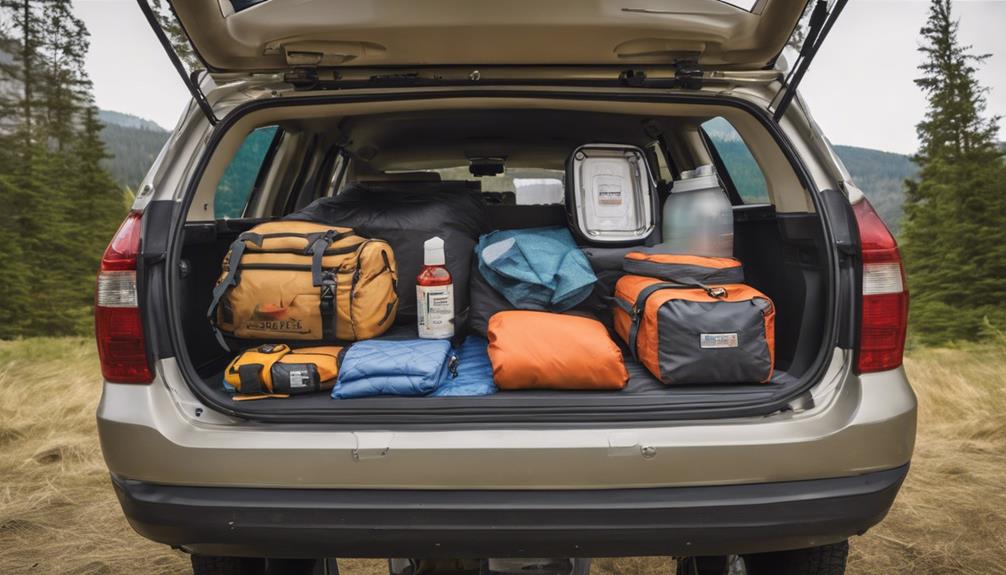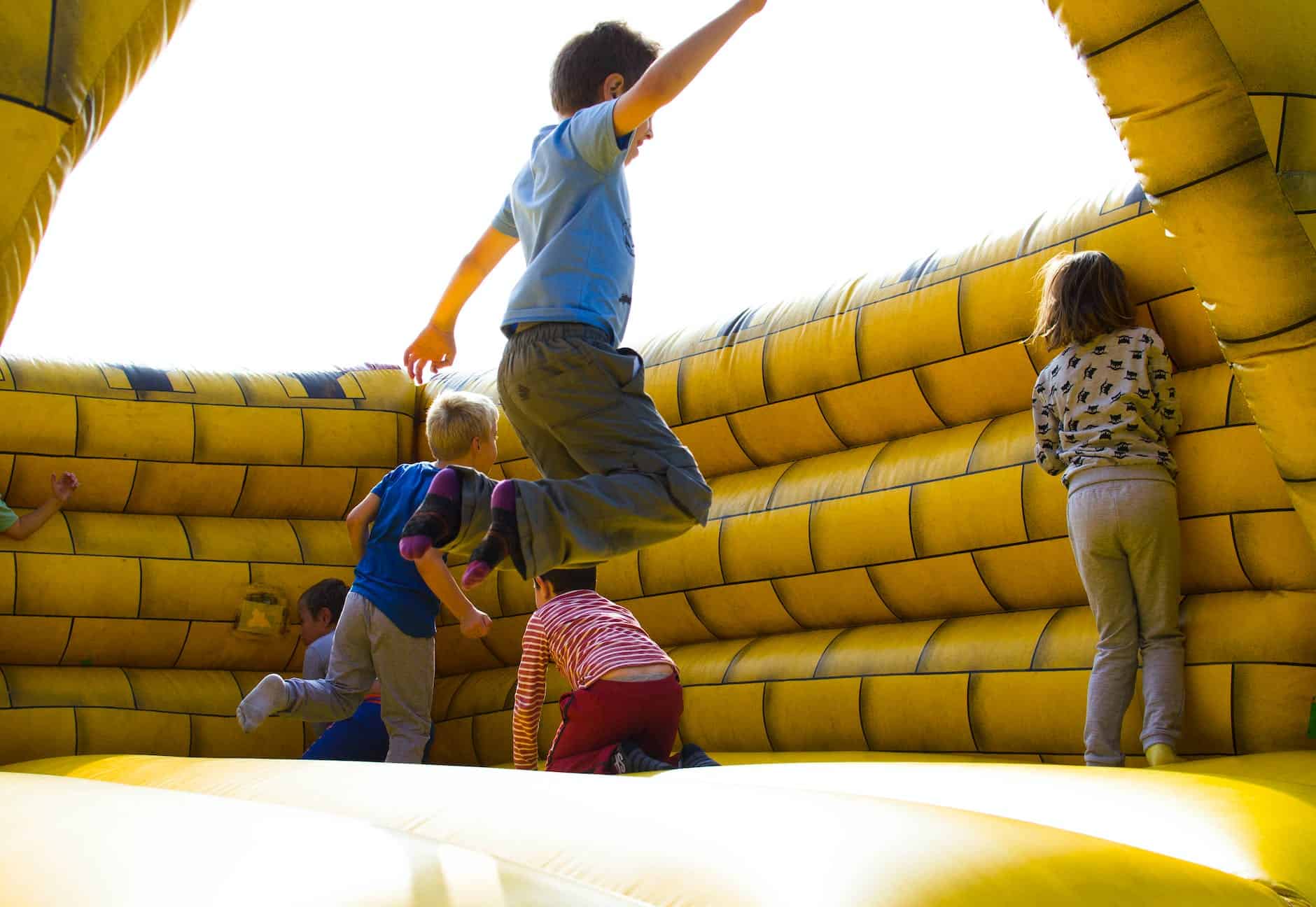If you’re like me, you probably love spending time outdoors with your little ones. Seeing the excitement on their faces when they see a waterfall for the first time or hearing their giggles as they play in a stream is truly priceless. But, getting them to these places can be a challenge, especially when it involves long distances!
That’s why I always carry a child carrier with me when I go camping. In this blog post, we will discuss the different types of child carriers available, and help you choose the one that is right for you and your family!
Child Carrier
A quality child carrier does not come cheap, but its price tag is a reflection of the years of research and development that have gone into making it one of the most versatile and functional pieces of baby gear on the market. Whether you choose a soft snuggle sack for younger infants or a frame-supported carrier for older children, you can be confident that your little one will be safe, comfortable, and well-Supported.
A good carrier provides essential carrying comfort for both parent and child, but it is also highly adjustable to accommodate different body types and sizes. Additionally, many carriers are now designed to be used in multiple positions, from front-facing to rear-facing, making them an even more valuable investment. When it comes to choosing the right carrier for your family, don’t skimp on quality—a good child carrier is worth its weight in gold.
Snuggle Sack a Baby Carrier
The Snuggle Sack is a type of baby carrier that is designed for comfort. It is made from a soft material, and the baby rests in a cotton-lined pouch. The carrier can be worn in front or over the back, depending on the size of the baby. One of the main benefits of the Snuggle Sack is that it is very comfortable for both the baby and the parent. However, it does not provide much support for the parent and there is no place to store extra gear.
The main limitation of the Snuggle Sack is its soft design, which provides no real support for the parent during extended carries or virtually no place to pack extra gear. Additionally, I found this system ideal for newborns but quickly moved into something with more support once your baby could sit up.
However, despite its limitations, the Snuggle Sack is still a popular choice among parents thanks to its comfortable design and ease of use. So if you’re looking for a baby carrier that’s easy to use and comfortable for both you and your child, the Snuggle Sack may be worth considering.
Frame-Style Child Carrier
If you’re looking for a frame-style child carrier, you have a lot of options to choose from. And with so many options on the market, it can be hard to know where to start. The best way to find the carrier that’s right for you and your child is to try them out.
With your child in tow, test out a variety of carriers and compare the fit and feel. Pay close attention to how comfortable you and your child are in the carrier. If it’s not comfortable, it’s not worth your time or money. Take the time to find the perfect carrier for you and your family, and you’ll be glad you did.

When choosing a frame-style child carrier, you’ll find a wide range of options to choose from. At the most basic level, you can find plastic frames with minimal shoulder straps and a basic seat sling.
These carriers are typically very lightweight and easy to use, making them a good choice for short hikes or trips to the park. For more adventurous outings, you’ll want to consider a carrier with a more sturdy suspension. These carriers often have aluminum or composite frames with well-padded shoulder straps and waist belts.
Some even include features like sunshades and rain covers, making them ideal for long hikes or backpacking trips. With so many options available, you’re sure to find a frame-style child carrier that’s perfect for your needs.
When you are out walking with your child, it is important that you are comfortable as well. Most child carriers are designed for this purpose. They put the child closer to your center of gravity, which makes it easier for you to walk. The child can also see ahead, so they are more comfortable and at ease.
This often puts a head on your shoulder to rest. however, it is also important to make sure that the carrier is not too loose or too tight. You want the carrier to be snug enough so that the child feels secure, but not so tight that it is uncomfortable for either of you. With a little bit of trial and error, you should be able to find the perfect fit.
There are several downsides to carrying children in child carriers, however. One is the wandering little hands that love to pull hair, stick fingers in your mouth, and inadvertently poke eyes. The second is potentially dangerous. A child who is squirming and shifting, perhaps while turning around repeatedly to see the parent walking behind, creates a rather unwieldy load that can cause stumbles and make hiking less than pleasurable.
In addition, carrying a child in a carrier can be physically taxing, particularly if the child is heavy or the terrain is rugged. And finally, there’s the issue of simply needing a break from time to time. Hiking with a child in a carrier can be an enjoyable way to explore the outdoors, but it’s important to be aware of the potential challenges and plan accordingly.
Choosing a Child Carrier
When it comes to choosing a child carrier, safety is always the top priority. Before making a purchase, make sure to thoroughly inspect the system for any signs of wear and tear. In addition, be sure that the carrier is equipped with a strongly encoded safety belt to strap your child in.
Even the most well-made carrier can be dangerous if not used correctly, so always follow the manufacturer’s instructions carefully. By taking these precautions, you can help ensure that both you and your child have a safe and enjoyable experience while using the carrier.
There are several important factors to keep in mind.
- Firstly, you want to choose a carrier that is comfortable for both you and your child.
- Secondly, you want to choose a carrier that will be safe and secure, with straps that are adjustable and will not slip.
- Thirdly, you want to choose a carrier that is easy to use, with clear instructions on how to put it on and take it off.
Finally, you want to choose a carrier that has a built-in fold-out stand, which will be very useful for quick rest stops.
With so many different carriers on the market, it can be difficult to know which one to choose. However, if you keep these factors in mind, you should be able to find the perfect carrier for you and your family.
Clean My Child Carrier
It is important to keep your child’s carrier clean, both for the health of your child and for the longevity of the carrier itself.
To clean the carrier, first, remove all loose dirt and debris with a brush or vacuum cleaner attachment. Then, wash the carrier with warm water and mild soap. Rinse it thoroughly and allow it to air dry completely before using it again.
If you notice any damage to your carriers, such as frayed straps or broken buckles, be sure to replace them immediately. By taking these simple steps, you can help ensure that your child’s carrier will last for many years to come.
Conclusion
When it comes to choosing a child carrier, there are a few important things to keep in mind. The first is that you want to choose a carrier that is both comfortable and safe for both you and your child. The second is that you want to make sure that the carrier is easy to use, with clear instructions on how to put it on and take it off.
And finally, you want to make sure that the carrier has a built-in fold-out stand for quick rest stops. With so many different carriers on the market, it can be difficult to know which one to choose. However, if you keep these factors in mind, you should be able to find the perfect carrier for you and your family.
Choose the Right Child Carrier for You and Your Little One FAQ
What is the best child carrier for hiking?
The best child carrier for hiking is one that is comfortable and safe for both you and your child. You also want to make sure that the carrier is easy to use, with clear instructions on how to put it on and take it off. And finally, you want to make sure that the carrier has a built-in fold-out stand for quick rest stops. With so many different carriers on the market, it can be difficult to know which one to choose. However, if you keep these factors in mind, you should be able to find the perfect carrier for you and your family.
How do I choose a child carrier?
There are a few important things to keep in mind when choosing a child carrier. The first is that you want to choose a carrier that is both comfortable and safe for both you and your child. The second is that you want to make sure that the carrier is easy to use, with clear instructions on how to put it on and take it off. And finally, you want to make sure that the carrier has a built-in fold-out stand for quick rest stops. With so many different carriers on the market, it can be difficult to know which one to choose. However, if you keep these factors in mind, you should be able to find the perfect carrier for you and your family.
What are the different types of child carriers?
There are a few different types of child carriers. The most common type is the backpack carrier, which is perfect for hikes and other outdoor activities. There are also front-facing carriers, which are great for everyday use, and side-by-side carriers, which are perfect for twins or siblings close in age. With so many different types of carriers on the market, it can be difficult to know which one to choose. However, if you keep these factors in mind, you should be able to find the perfect carrier for you and your family.
How do I clean my child carrier?
Most child carriers can be easily cleaned with a mild soap and water solution. However, there are some carriers that require special care when cleaning. Always refer to the manufacturer’s instructions when cleaning your child carrier. With so many different types of carriers on the market, it can be difficult to know which one to choose. However, if you keep these factors in mind, you should be able to find the perfect carrier for you and your family.
What are the benefits of using a child carrier?
There are many benefits of using a child carrier. Child carriers allow you to introduce your children to the outdoors before they can walk any distance. Child carriers also provide a gentle rocking rhythm that can often put the squirmiest child to sleep. And finally, most child carriers have a built-in fold-out stand for quick rest stops. With so many different types of carriers on the market, it can be difficult to know which one to choose. However, if you keep these factors in mind, you should be able to find the perfect carrier for you and your family.
What are some of the things I should avoid when using a child carrier?
There are a few things you should avoid when using a child carrier. First, avoid carrying your child for more than two hours at a time. Second, avoid carrying your child on your back for more than four miles at a time. And finally, avoid carrying your child in a front-facing carrier until they are at least six months old. With so many different types of carriers on the market, it can be difficult to know which one to choose. However, if you keep these factors in mind, you should be able to find the perfect carrier for you and your family.



















